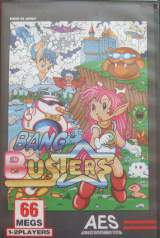
The Neo Geo, stylized as NEO•GEO and also written as NEOGEO, is a ROM cartridge-based arcade system board and fourth-generation home video game console released on April 26, 1990, by Japanese game company SNK Corporation. It was the first system in SNK's Neo Geo family.

The Neo Geo CD is the second and last home video game console produced by SNK Corporation, released on September 9, 1994. The system is the same platform as the cartridge-based Neo Geo released four years earlier, but converted to the cheaper CD media format which retailed at $49 to 79 per title compared to over $200 for the equivalent cartridge.

SNK Corporation is a Japanese video gaming and interactive entertainment company. It was founded in 1978 as Shin Nihon Kikaku by Eikichi Kawasaki and began by developing coin-op games. SNK is known for its Neo Geo arcade system on which the company produced many in-house games and now-classic franchises during the 1990s, including Aggressors of Dark Kombat, Art of Fighting, Fatal Fury, King of the Monsters, Metal Slug, Samurai Shodown, The King of Fighters, The Last Blade, Twinkle Star Sprites, and World Heroes; they continue to develop and publish new titles in some of these franchises on contemporary arcade and home platforms. Since the 2000s, SNK have diversified from their traditional arcade focus into pachislot machines, mobile game development and more recently character licensing.
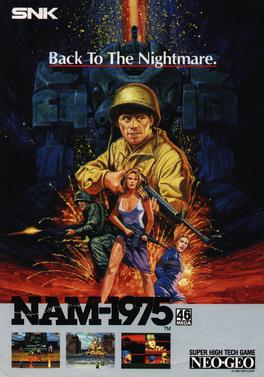
NAM-1975 is a war shooting gallery arcade video game developed and originally published by SNK on April 26, 1990. It was one of the launch titles for both the Neo Geo MVS (arcade) and Neo Geo AES (home) platforms, in addition to being the only title in the system that does not feature the Neo Geo boot screen in its attract mode, as well as one of the pack-in games for the AES.
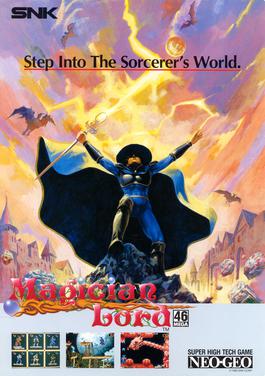
Magician Lord is a side-scrolling action-platform arcade video game developed by Alpha Denshi and originally published by SNK on April 26, 1990. It was one of the launch titles for both the Neo Geo MVS (arcade) and Neo Geo AES (home) platforms, in addition of also being one of the pack-in games for the AES.

Baseball Stars Professional is a baseball arcade video game developed and originally published by SNK on 26 April 1990. A follow-up to the original Baseball Stars on Nintendo Entertainment System, it was one of the launch titles for both the Neo Geo MVS (arcade) and Neo Geo AES (home) platforms, in addition of also being one of the pack-in games for the AES, as well as the first baseball title released for the Neo Geo.
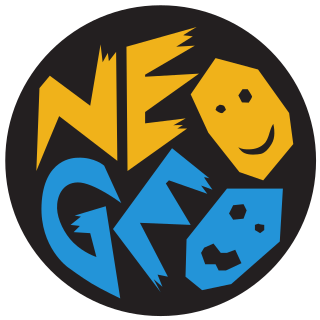
Neo Geo is a family of video game hardware that was developed by SNK. On the market from 1990 to 2004, the brand originated with the release of an arcade system, the Neo Geo Multi Video System (MVS) and its home console counterpart, the Neo Geo Advanced Entertainment System (AES).

Fast Striker is a video game developed and published by German developer NG:Dev.Team in 2010 for the Neo Geo MVS. The player flies a space fighter craft through vertically scrolling levels to shoot waves of enemies. The game was later ported to Dreamcast, iOS, Neo Geo AES, PlayStation 4 and PlayStation Vita.

Gunlord is a 2012 single-player run and gun video game developed and published by German indie NG:Dev.Team for the Neo Geo MVS. It is the first run and gun title from NG:Dev.Team and their third game overall. Taking place after the events of Last Hope, the player assume the role of Gordian Gaiden facing against an evil lord called "The Master" on planet Kairos II while searching for his wife Vanessa, who went missing after defeating the evil empire. Inspired by 16-bit titles such as Turrican, the game originally started development in 2003 but was postponed for various years until the project was resumed in 2010, lasting eighteen months in production.

Sun Shine is an unreleased 1990 tile-matching puzzle arcade video game that was in development by Alpha Denshi and planned to be published by SNK for both the Neo Geo MVS (arcade) and Neo Geo AES (home) platforms. It is the first puzzle game to be developed for both systems and the smallest Neo Geo game in terms of memory data.

Andro Dunos is a scrolling shooter arcade video game developed by Visco Corporation and originally published by SNK on June 15, 1992. It is the first title to be created by Visco for both the Neo Geo MVS (arcade) and Neo Geo AES (home) platforms. Andro Dunos, along with 1996's Breakers are the only two Visco developed games to be officially licensed for distribution on the Neo Geo AES platform. All other Visco games were only released on the Neo Geo MVS arcade platform.
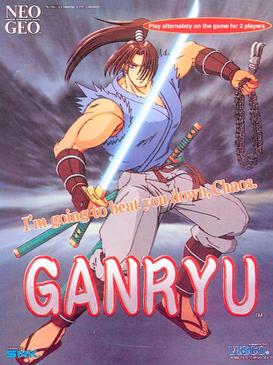
Ganryu is a 1999 side-scrolling hack and slash action-platform arcade video game developed and originally published by Visco Corporation exclusively for the Neo Geo MVS. It is loosely based upon the battle of Japanese swordsman Miyamoto Musashi on Ganryū-jima island against Sasaki Kojirō, who is also known as Sasaki Ganryū, hence the reasons for the abbreviated name of the game. In the game, players assume the role of either Musashi or Suzume on a journey to defeat a resurrected Kojirō and his legion of evil ninjas and monsters terrorizing Kyoto. A sequel, titled Ganryu 2: Hakuma Kojiro, was developed Storybird Studio and published by Just for Games and PixelHeart. It was released in April 2022 to generally mixed reception.

Riding Hero is a hybrid racing/role-playing arcade video game developed and originally published by SNK on July 24, 1990. It was the first title for both the Neo Geo MVS (arcade) and Neo Geo AES (home) platforms that featured "Multi Play" (Multi-Link) support, which allowed two systems to be connected via a phone jack port integrated into each cartridge for versus LAN play.
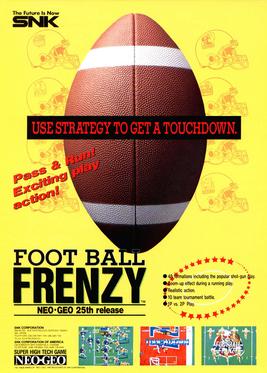
Football Frenzy is an American football arcade video game developed and originally published by SNK on January 31, 1992. It was the second football game created by SNK after 1987's Touch Down Fever, as well as the only football game released for the Neo Geo platform.

Mystic Wand is an unreleased 1991 puzzle-platform game that was in development and planned to be published by Alpha Denshi for both the Neo Geo MVS (arcade) and Neo Geo AES (home) platforms.

Dunk Star is an unreleased 1991 basketball arcade video game that was in development and planned to be published by Sammy for the arcade Neo Geo MVS and Neo Geo AES home console. Had it been launched before Street Slam, it would have become the first basketball title for the Neo Geo platforms.
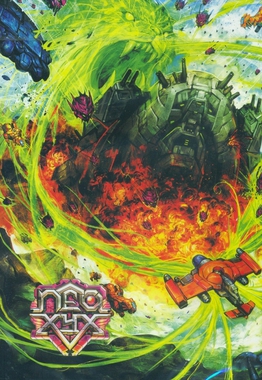
Neo XYX is a 2013 single-player vertically scrolling shooter video game originally developed and published by German indie NG:Dev.Team for the Neo Geo MVS. It is the third shoot 'em up title from NG:Dev.Team and their fifth game overall. Controlling a space fighter craft, the player must fight endless waves of enemies while avoiding collision with their projectiles and other obstacles.
NGDEV, formerly NG:Dev.Team, is a German video game developer and publisher. Founded in 2001 by brothers Timm and René Hellwig, it is known for developing 2D homebrew games with arcade gameplay for the Neo Geo and Dreamcast.

Razion is a 2014 horizontally scrolling shooter video game developed and published by German indie team NG:Dev.Team for the Neo Geo. It is the fourth shoot 'em up title from NG:Dev.Team and their sixth game overall. Controlling a space fighter craft, the player must fight endless waves of enemies while avoiding collision with their projectiles and other obstacles.
